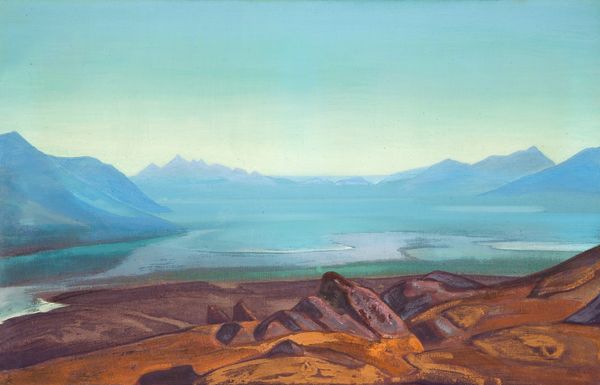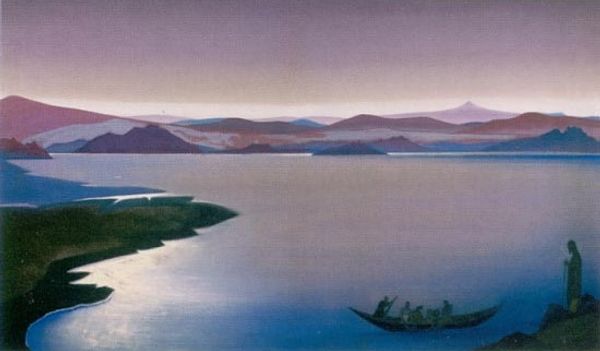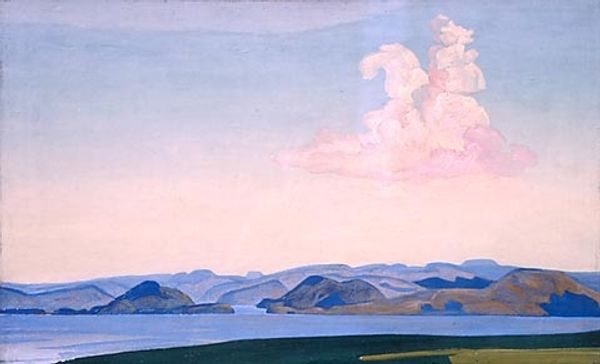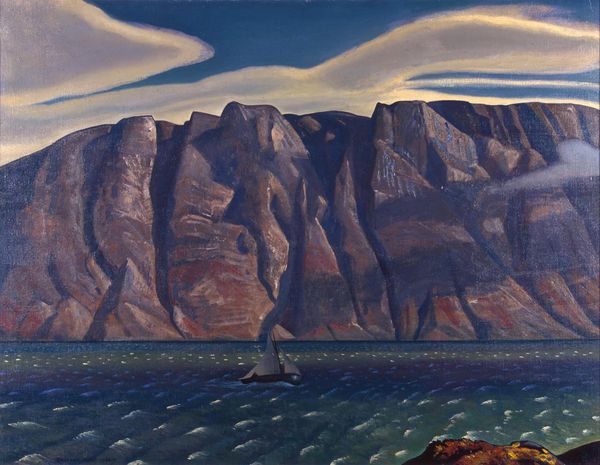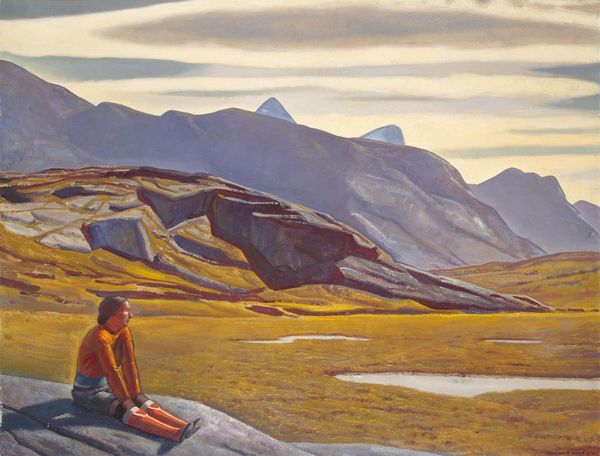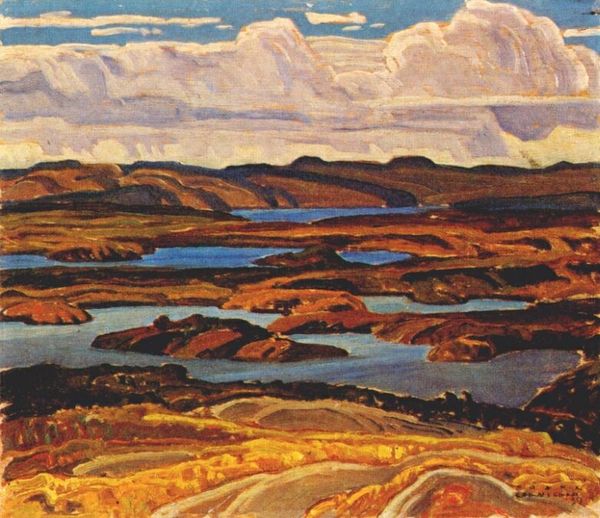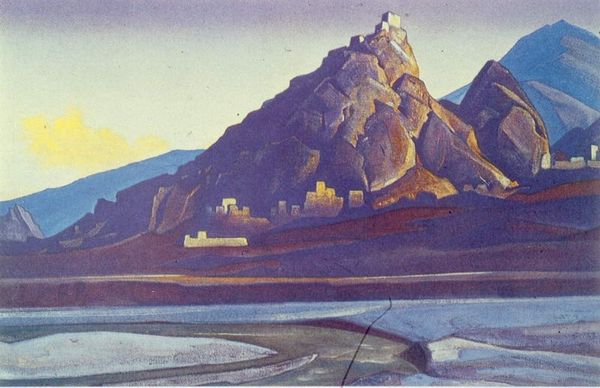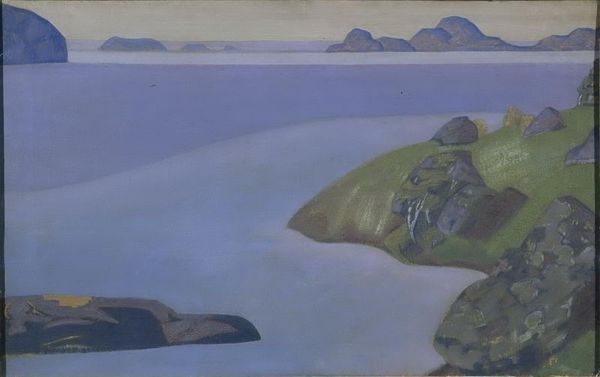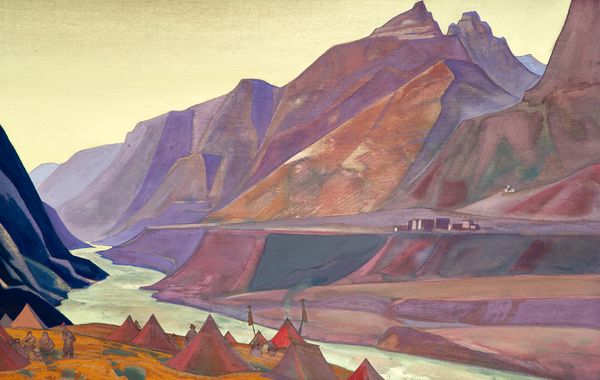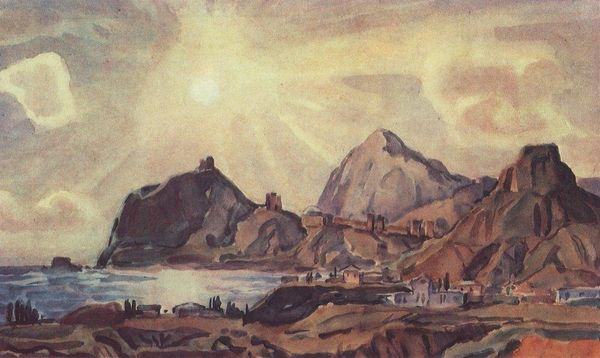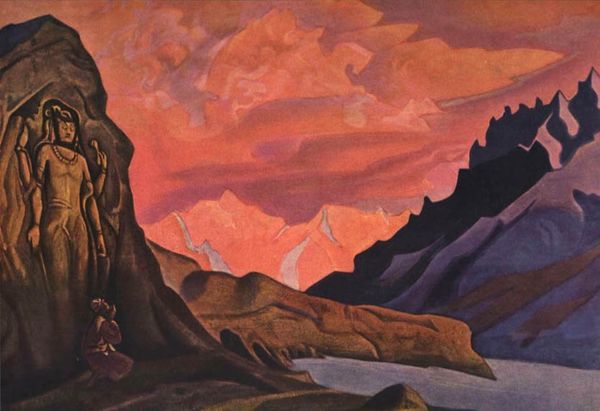
painting, oil-paint
#
painting
#
oil-paint
#
landscape
#
figuration
#
oil painting
#
genre-painting
#
modernism
#
realism
Copyright: Rockwell Kent,Fair Use
Curator: Let's consider Rockwell Kent's "Tassiusak, Greenland," an oil painting created in 1933, currently housed at the Hermitage Museum. Editor: My first thought? Stark beauty. It’s got that 'lonely planet' vibe, like discovering a new world that is already someone's home. The palette is quite muted, making the scene feel intimate and vast simultaneously. Curator: Kent spent considerable time in Greenland, deeply impacted by the landscape and Inuit communities. This work reflects his socialist leanings; an interest in depicting working people in connection to land and labor, separate from industrial civilization. He actually became quite a celebrated figure in the Soviet Union due to his artistic approach, one steeped in realistic representation. Editor: You can feel that connection to place, certainly. Look how the reflections in the water almost mimic and double the solid world; a world turned upside down by the chill water. The figures seem quite small against the immense landscape, and it is an isolating kind of harmony, though there is that tiny, insistent spot of red that grabs you and will not let you go. Curator: Kent's realism is deliberate, moving away from pure documentation. There's a definite social agenda evident in his choices about composition. He idealizes simple, rural life, implicitly critiquing industrial societies. Editor: Is it an idealized vision, though, or something truer? Maybe beauty is harsh. Look, it looks like someone on the opposite river bank is giving a helping hand up the riverbank! Or it might just be how a person would deal with these rocky outcrops! But maybe in those tough places there's a basic element of caring for the human? A hand to those places where things seem difficult? Maybe he's on to something essential? Curator: I see how it reads differently in our present moment, when industrialism's effects are so well known. Ultimately, the painting became more than just social advocacy. It gained significance as a commentary on environmental consciousness. Editor: True! Looking at this makes me consider what progress really is, or should be. Not that you can get it from only one glance but it whispers and speaks. Art that manages to stick around and still stay relevant like that? Not many of us can pull that off.
Comments
No comments
Be the first to comment and join the conversation on the ultimate creative platform.

